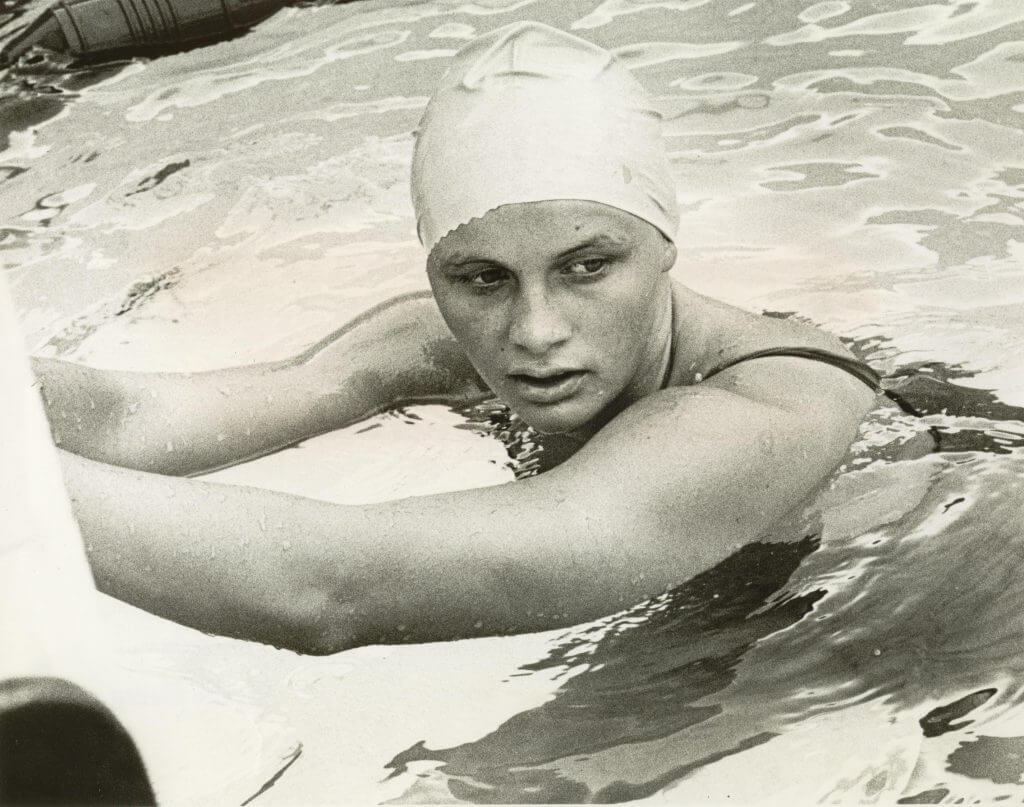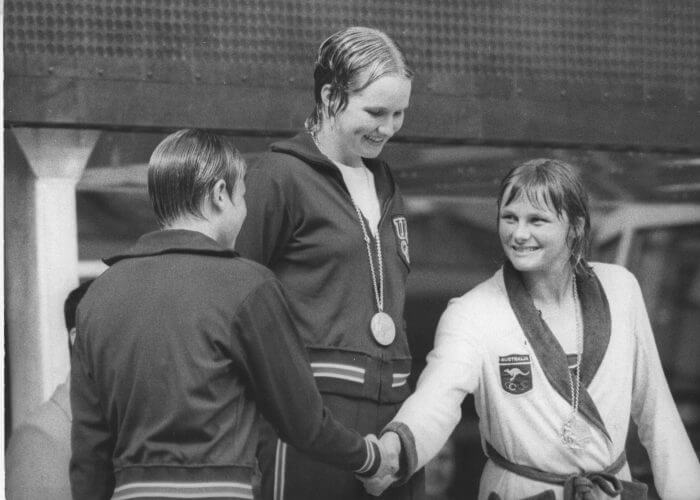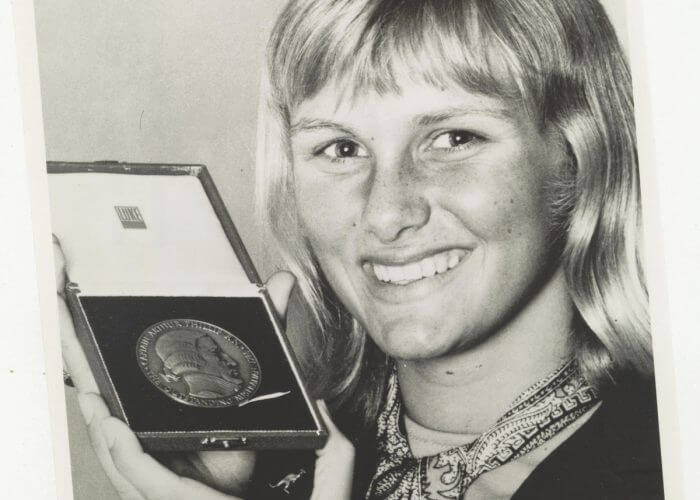World Record Flashback: The Golden Anniversary Of Shane Gould and a Special 1972 Campaign

World Record Flashback: The Golden Anniversary Of Shane Gould and a Special 1972 Campaign
Our “World Record Flashback” series typically selects a singular standard to celebrate and analyze. But this month’s installment focuses on the quartet of global marks established by Australian legend Shane Gould during the 1972 campaign. Three of the records arrived at the Munich Olympics, and with this year marking the Golden Anniversary of those Games, the decision to veer slightly from our normal protocol seemed sensible.
How does the saying go? Sometimes, you don’t know what you have until it’s gone? Yes, that’s it. Every so often, we find ourselves caught up in the moment and lack full appreciation for what is right in front of us. Then, when it disappears, we yearn for one more day. For one more chance to properly tip our cap. And, of course, we promise not to make the same mistake—until we err again.
Fifty years ago, the sport was gifted a special talent from Down Under. She excelled at the highest level, dazzling the sport with her range and versatility. But in the blink of an eye, she was gone. Out of the water. At her peak. The pressure was too much. Her desire waned. And so, we wonder what could have been. How many more Olympic medals? How many more world records? Could she have derailed the East German machine?
Typically, all-time great status is earned over time, years of success and multiple Olympic appearances contributing to the distinction. Shane Gould wedged her greatness into a tight window, a span of just a few years. She was mentored by the legendary coaching duo of Forbes and Ursula Carlile, emerging as an international force just into her teen years.
A SECOND COMING

Photo Courtesy: Shane Gould/International Swimming Hall of Fame
On the blocks for a sprint-freestyle event, Gould flourished. In the water for middle-distance competition, the Aussie shined. Ask her to contest a distance event, and the opposition was in trouble. She even ruled the 200 meter individual medley, such was the special nature of her talent. For a country that witnessed the brilliance of Dawn Fraser during the previous generation, Gould was a second coming.
“She was very good when she came to us,” Forbes Carlile said of Gould. “She was a 12-or-13-year-old who had done well. We picked her as a future champion. As a matter of fact, when she first got into the pool with us, it was a question of when she’d break Dawn Fraser’s world record (in the 100 freestyle), not if she’d break it. We trained her as an endurance athlete, and it carried her through, both in sprints and in distances. That was a new idea (at the time).”
A FACE OF THE MUNICH GAMES
As 1972 dawned, and attention toward Munich increased, Gould was pegged as a face of the upcoming Games. It wasn’t hard to figure out why. In 1971, Gould set six world records over a variety of freestyle distances, and there was no reason to believe she would level off. In case anyone doubted her potential for the next Olympiad, Gould fired a warning shot in January 1972.
Racing at the New South Wales State Championships on Jan. 8, Gould lowered the world record in the 100 meter freestyle to 58.5. Gould had previously shared the record with Fraser at 58.9, but it was now her mark alone, and Fraser was—for the first time since 1956—separated from a world record she defined. Unquestionably, Gould’s performance opened the Olympic campaign in grand fashion, and generated momentum.
In the months ahead, Gould followed the blueprint drafted by the Carliles for Munich. She qualified to compete in five individual events and peaked in September. The approach was similar to that of American Mark Spitz, the Indiana University star who eventually garnered seven gold medals at the 1972 Games.

Shane Gould – a Living National Treasure in Australia – Photo Courtesy: Swimming World Archives
Once the Munich Olympics opened, the 15-year-old Gould wasted little time setting her first world record. In the 200 individual medley, the Aussie fended off East German 13-year-old Kornelia Ender for the gold medal. Gould touched in a world record of 2:23.07, good for a half-second margin over Ender (2:23.59). The triumph boded well for Gould, as her upcoming freestyle events were considered the strengths of her program.
On the heels of her medley victory, Gould was expected to add a second crown in the 100 freestyle. Instead, she picked up the bronze medal. The outcome could have disrupted the remainder of her week, but Gould measured the situation maturely and brushed the setback aside. Dwelling on the race wasn’t going to change the result.
“The 100 freestyle was one that I wanted to win,” Gould said. “That’s kind of like the blue-ribbon event. I knew as soon as I dived in and swam 10 meters, it was not my day for the 100 freestyle. I got to the end, and I thought, ‘Third place. OK, let’s do this again. Do better the next time. But that’s it. You haven’t got another chance.’”
Proving there was no lingering disappointment from the 100 freestyle, Gould followed with back-to-back world records in the 400 freestyle and 200 freestyle. In the longer event, the Aussie clocked 4:19.04 to beat Italian Novella Calligaris by more than three seconds. In the 200 freestyle, a showdown with American star Shirley Babashoff ended with Gould going a world-record time of 2:03.56, nearly a second quicker than the 2:04.33 of Babashoff. Gould’s effort chopped 1.65 seconds off Babashoff’s world record, which was set a month earlier at the United States Olympic Trials.
In her final solo event of the Games, Gould picked up the silver medal in the 800 freestyle, finishing behind the United States’ Keena Rothhammer. Overall, Gould won five individual medals, a tally that has only been matched by Michael Phelps (2004/2008) in the half-century since Gould first managed the feat.
EARLY RETIREMENT
In early 1973, Gould set the final world record of her career when she cracked the 17-minute barrier in the 1500 freestyle, thanks to a time of 16:56.9. Not long after, she announced her retirement—at the age of sixteen—ending hope she would race at the inaugural World Championships in September and the 1976 Olympics in Montreal.
“There was a whole series of things that happened,” Gould said of her decision to retire. “I went to America after the Olympics. I wasn’t a happy chappy. I was wondering whether to swim or not to swim. I had a lot of hot chocolate fudge sundaes and doughnuts and didn’t swim as much. So, I just blew up like a balloon, and that’s not very good for competition swimming to be overweight. I was just confused. There was a lot of pressure for me to stay swimming, but I really had no goals to work toward, and just in the confusion of it all, I had to run away.”
* * *
Had Gould stayed in the sport, she and Ender would have clashed in several events. Perhaps the Aussie could have given Ender a battle, despite the East German’s unfair doping advantage. Would Gould have upped her career tally to eight, nine or 10 Olympic medals? We’ll never know. What is inarguable, though, is that Gould’s brief career was nothing short of sensational.
“You see there truly is something delightful about the experience of competing at an elite level, and it’s not the extrinsic—the glory, the medals or the money,” Gould said. “All of the motivation is intrinsic. You have to love to try, love to perform, love to compete, love to be disciplined and love the physical exertion. Most of all, it’s the love of being good at what you do.”
Non-Subscribers can click here to download this issue for only $5.94



